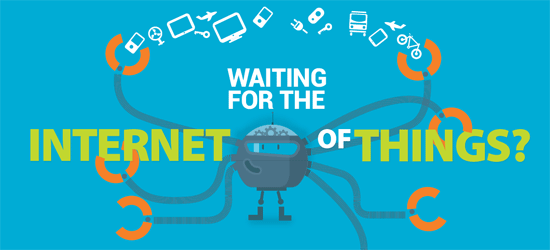Lately I’ve been spending a lot of time thinking about the impact of the Internet of Things (IoT) on nearly every aspect of our daily work and personal lives. Today, our phones, homes and cars are getting smarter thanks to a slew of embedded sensors and geolocation capabilities. IoT also is making major inroads at work, as reinforced by a recent Dell-sponsored EMA survey that revealed 47 percent of organizations polled view IoT as essential or important to their business.
Some pundits say IoT is a revolution, but I see it more as an evolution because data already exists in many forms, but the challenge is getting the right data at the right time to the right person. To take full advantage of IoT, organizations need to first clear some major stumbling blocks.
In the infographic below that illustrates some of the findings of our survey, we defined some of the many reasons for the IoT hold-up. The top five in particular are:
- Lack of an integrated team to make use of all the IoT data
- Privacy issues with data produced by end devices
- Quality and reliability of data from end devices
- Connectivity throughput to end devices
- Undefined business case for the user of device information
To illustrate the importance of lowering these impediments, let’s take a look at the connection—or rather, disconnection—between IoT and disaster preparedness. Clearly data generated by IoT can play an important role in helping prepare and respond to natural disasters.
During a recent IoT hackathon to help disaster victims, six university students convened at Boston-based high-tech company PTC and went back in time to New Orleans in 2005 when Hurricane Katrina hit. They then tied together an IoT-centric disaster relief plan comprising aerial maps, a cellphone app streaming real-time data, an unmanned aerial vehicle and remote sensor data—all of which was streamed into a centralized command and control center.
By integrating all the data from the connected devices, the students were able to create real-life scenarios, so rescuers could quickly reach the most severe trauma cases and bring them to the correct facilities. As the hackathon proved, IoT makes it possible to take advantage of connected devices to create a super system with a virtual command center. In doing so, you can create spontaneous collaboration, consensus and coordination—with a single mission and common purpose, resulting in a better outcome.
With IoT, virtualized, cloud-based command centers can be deployed much faster than their brick-and-mortar counterparts. People can check in and out via their mobile devices, and subject matter experts can share insights transparently and instantaneously. The effectiveness of all efforts can be monitored in real-time, making it possible to change course or escalate efforts immediately. Using solutions like Dell Statistica, information can be gathered and culled to drive deeper understanding of the meaning behind the data.
If IoT had played a bigger part in the “blizzard of 2015,” perhaps the National Weather Service (NWS) could have saved face and New York City could have saved $200 million in lost economic activity. Instead, the NWS was harshly criticized for forecasting that a potentially historic blizzard would dump up to 30 inches of snow on NYC without communicating the uncertainty of their prediction. Meanwhile, Big Apple officials were slammed for shutting down schools, roads and public transportation for less than a foot of snow.
According to The Washington Post, flawed forecast information and failed communications were the root of the problem. Not only did the NWS fail to adequately communicate the uncertainty in what was an extremely complicated forecast, they also fell short in providing any scenarios beyond the worst-case, which caused a wave of panic to ripple across the Northeast corridor.
It’s highly likely that IoT supplies the weather service with enough data to produce minimum, maximum and most likely snow fall amounts to guide local forecasts. But the failure to aggregate, integrate and share this vital information led to a black mark on the NWS and possible loss of public trust in weather forecasts.
I bet that IoT could help the NWS regain public confidence in its overarching mission to protect life and property. I’m also sure that as IoT continues to evolve, it will become a prevalent part of everyday life, enabling us to collect, visualize and analyze data in new and exciting ways. In addition to providing first responders with virtual command centers that deliver actionable insight when every second counts, I envision a day when IoT will unlock the power of all kinds of data to change how we work and live.
Where does IoT fit into your grand scheme of things? Drop me a line at Joanna.schloss@software.dell.com to continue the conversation.

